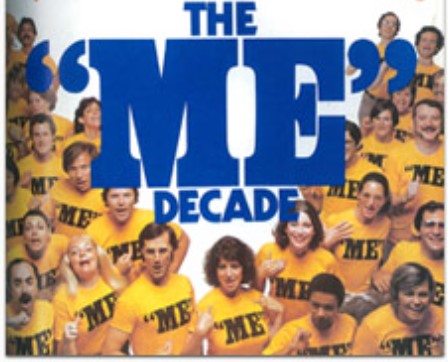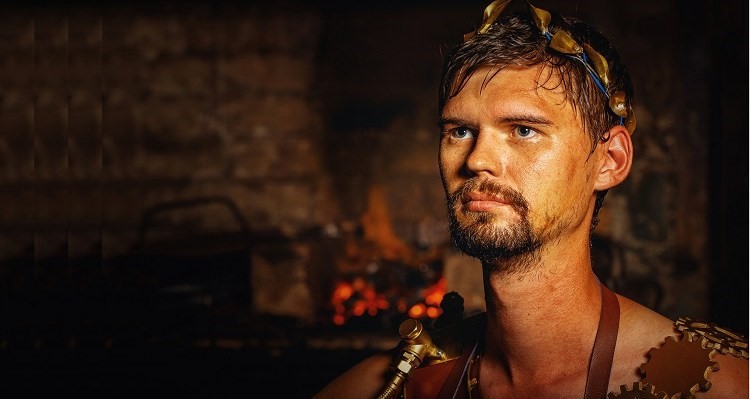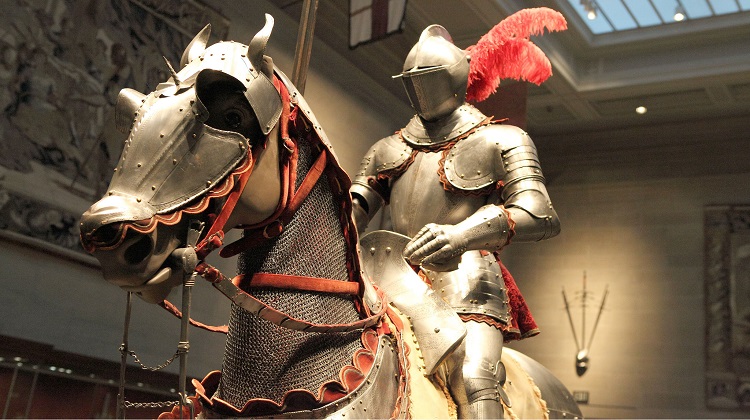The excerpt below is from The Manipulated Man by Esther Vilar, available at Amazon.
American Man – the Most Successfully Manipulated Male on Earth
THE EXPLOITATION OF THE AMERICAN MALE by the American female would be a purely American affair were it not a model for women all over the world. Unfortunately, the economic hegemony of the U.S.A. influences not just the politics, science, research, and culture of all other capitalist countries but, to a great extent, the social behavior of their populations. Through the mass media, which have been relentlessly perfected, this influence spreads to all areas of life more and more rapidly.
The old maxim about American consciousness becoming the consciousness of the world after a five year lag no longer holds true. Modern techniques of communication have flooded over the boundaries separating place and time. If the United States develops a new treatment for heart attacks, hospitals in Latin America will be using that very treatment a few weeks later. If the performance of American schoolchildren is improved by teaching machines, these same machines will be hooked up within a short time in the classrooms of Japan. The moment a hit like Jesus Christ Superstar opens on Broadway, students in West Germany start praying. As soon as the American female compares her situation with that of American blacks, women in England, France, and Scandinavia scream, “We are the Niggers of the Nation.”
While American influence has its benefits in other spheres (for example, in research), in the social sphere, as far as the social position of men in these countries is concerned, surely there is none. There is no country in which men are worse off than they are in the United States. They are worse off by comparison with their female partners – and this is what we are dis- cussing here: the differing living conditions of man and woman within one and the same social class of a given country, within one and the same family.
Nobody will deny that the struggle of a poor white-collar worker to survive is more difficult in Portugal than in Sweden and that in the same country a factory worker’s wife has a harder life than the wife of an engineer. These injustices are the subject of many other books; here we can discard them entirely. By comparison with her husband – not by comparison with the engineer’s wife – the factory worker’s wife leads a luxurious life.
America’s high standard of living, combined with its permanent threat of unemployment, is enough to make any man’s life miserable. In no country with a comparable standard of living are jobs so tenuous; in no other country with a comparable rate of unemployment are the demands made by the standard of living as high. The difference between a “success” and a “failure” is nowhere so clearly defined as in the U.S.A. Added to these external difficulties is the fact that no other man is so thoroughly manipulated as the American male. The adult American male is manipulated so expertly that there appears to be nothing he would not willingly endure. And, indeed, he is exploited without scruple. In no other country do mothers so pitilessly train the male infant to perform. No other society exists where the male sexual drive is exploited for money so unscrupulously. Nobody except the American woman so shamelessly professes a creed of profit under the guise of love.
This does not mean that American women are cruel. Women are never cruel to their men; men are usually not important enough to be tortured. Only in movies do women ruin their men intentionally. This simply means that American women, more than other women, fail to consider men as fellow human beings. Perhaps the many dangers of pioneering days caused American men to be evaluated by their usefulness to women. After all, that period in history is not that far gone.
And American men prefer to see themselves in this role: a man’s salary is the yardstick of his worth. America is the only place where a badly paid professor is a bad professor, and an unsuccessful writer a bad writer. For the Latin American male, masculinity is still associated with sexual potency. For the American male, however, the association is directly with money. American literature, from Edward Albee to Jacqueline Susann, re- volves around this question: whether or not a male is a man if he cannot provide appropriately for the woman in his life. Of course he is not.
The American man knows: happiness comes only through women, and women are expensive. He is ready to pay that price. As a young adult he pays in advance, as a grownup he pays in installments, and as a corpse he is cashed in for a fortune. A man from another country realizes this as soon as he sees a flourishing divorce paradise like Reno, or the thousands of his fellow men sitting in jail for overdue alimony payments. On the other hand, the American man views this as confirmation of his superiority. Is he not the privileged one, as he has enough money to pay for it all? Is he not the competent one, since he goes to work? Would his wife have taken on his family and surname were he not the master? Only recently a poll showed that more American men than women believe that women are suppressed, and fifty-one percent of American men believe that the situation of the American white woman is as bad as that of the American black man.
The American man is grateful to his wife for letting him go to work, be- cause work to him is a male privilege. The woman for whom he provides has made sure that he never doubts it, and he feels sorry for her in spite of the unequivocal difference between his situation and hers. She has made sure that he sees a sacrifice in her waiver of work. He, more than any other man, mistakes his wife’s lack of intellectual ambition for modesty, her stupidity for exceptional femininity, her giving up responsibilities for love. More than any other man, he is able to close his eyes to the clear evidence of his own exploitation.
In this country man is manipulated with much less inhibition than in other countries: hence women should be even easier to unmask. But the American man does not want to see or know. It seems appropriate to him that in the TV show his children are watching, the father is portrayed as a fool, the mother as a star. Wasn’t his own mother superb? That a Mafia of women’s groups controls all cultural life seems unavoidable to him. Some- body has to take care of culture. That American women (and no other women in the rest of the world) run around in public with curlers in their hair is charming American folklore to him. The fact that a majority of psychiatric patients are women, while men have a higher rate of suicide, is his evidence for the value of psychoanalysis. He thinks it fair that for generations men have become crippled war veterans, while generations of women do not even know what a hand grenade looks like. Man is stronger and the stronger one goes to war.
Though the slavery of the American man is humiliating and nerve-racking, he does not want to see, of course, that his is the worst bargain: he has ended up with the most made-up, constantly recolored, the most conspicuously masked woman of all, in short, with the most unreal woman. But to this he closes his eyes.
Since the American woman is the highest paid wife, she, of course, wants something in return for her money. She is the leading consumer of cosmetics: she uses more lipstick, more cream, more powder, more color than a woman of any other nationality. Although she has a reputation for being especially dowdy, she needs more money for her clothes and other masquerades.
Of all women, she leads the most comfortable life. More often than her sisters of other nationalities, she lives in her own house, drives her own car, goes on vacation, does her work with the help of machines, and uses ready-to-cook food. She has a fully automated household, a bus takes her children to school, and they are gone almost all day, so that she has every opportunity to go to work; and yet the percentage of married women working in America is considerably lower than in other industrialized countries. Although the American woman has a better chance at a higher education than women of other countries, and although she is spared two years of military service, only thirteen percent of American coeds get their university degrees.
America has the highest divorce rate, and the chance that an infant will grow up with both a mother and a father is slimmer than in any other country. But that does not seem to disturb the American woman, for out of all women of highly industrialized nations, she has the highest birth rate. No wonder; children are a guarantee of income. American fathers pay the highest alimonies, and since non-payment can be punished by imprisonment, he pays promptly.
Even his old-age insurance rates are the highest. The average American husband is four years older than his wife, and his average life expectancy is seven years less than hers. The eleven years by which she will probably survive him do not represent a risk, and if she clings to her husband for life, she will be respected and well treated because of her money, so that the years will be even more comfortable without him. She plays bridge, is active in sports, has visits from her children and grandchildren, and works in her women’s groups for law and order. In flowery hats, her withered lips painted Stoplight Red (look, here comes an American woman!), she takes off once in a while for a tour around the world and makes sure that she is not forgotten abroad. And she is not; on the contrary – when an aging Rose Kennedy (having already sacrificed to her nation three male heirs while daughters and daughters-in-law are getting rich and old in the process) flirts in front of TV cameras, hoping to promote her last living son’s campaign for the presidency, she is celebrated as a heroine. What a brave mother!
One might assume that a prerequisite for the high profit achieved by American woman’s femininity would be top performance in other areas. But for the connoisseur, she is neither a good cook nor an experienced lover. Despite her good salary, the demands on her art of seduction are minimal. Her husband, trained by Hollywood to appreciate the coarsest of sex symbols (large breasts and big behinds), can no longer make fine dis- tinctions. All she really needs are a few good curves and the nerve to say no long enough. And she is a true master of that art. Necking and petting are an American invention. To lure men, like the women of other countries they wear false breasts, but only in America are false bottoms worn.
The logical result of such business tactics, steadily perfected through the generations, is frigidity, and the American woman has succeeded in persuading the nation that her frigidity is an illness to be taken seriously. After all, there is a difference: a prostitute would be willing to give up her orgasm, a wife would not. Instead of asking what a frigid woman is doing in the bed of a man, a man she does not even desire, an attempt is made to free her from her suffering through costly procedures and with ever-changing prescriptions (it goes without saying: only if she is properly married. Be- fore marriage, she would have had neither the money for therapy nor the interest in getting better).
The American woman is no worse than other women. She is only ahead of them all. Her unscrupulous tactics for exploitation would not be so dangerous if they were not constantly idealized by a powerful TV and film industry. As the latter creates the image of Western woman, her behavior is being copied, and as her standard of living is constantly raised, the fate of her husband automatically becomes the fate of men in other countries. Yet there is another reason to deal specifically with the American woman, and that is Women’s Liberation. American women are better off than other women around the world: but not all of the American women. The same system that brings so many advantages to most American women turns by necessity against a minority within their own ranks: the women who are unattractive by male standards.
Until recently, this condition went unnoticed by all save that minority. But one day this minority decided not to put up with that condition any longer and began to organize, like their predecessors, the suffragettes. Since the American public is accustomed to listening to women when they talk, their problems were soon much discussed. Not only in America but in the rest of the world, this new movement was taken up immediately. Why, one might ask, did this uprising of women start in America, of all places, where women are obviously better off? The explanation is simple: exactly for that reason. Because the American woman is better off, because social differences between married women and women who earn their own living are so enormous. Because in America more than any other country the working woman is treated as a traitor, an outcast, by the masses of female exploiters who see their own interests betrayed. This is why this movement had to start in the U.S.A. and no other place. Used to endless power over man and to the highest social prestige, American women will find the renunciation of power and prestige much more painful. And if the direct approach will not work, she will procure her insignia of feminine power in a roundabout way: Women’s Liberation.
Furthermore, a strained labor market has put this minority of women, forced or willing to work, into a somewhat more difficult position than their European sisters when they apply for higher positions. Many of them will see their difficulties from a particular perspective and interpret the unpleasantness of professional life as discrimination against their sex. But if an American employer were to fill an open position and to choose between an unattractive woman who did not appeal to his sexual instinct and a man, his choice would undoubtedly be the man. And he can even justify that decision: when a woman marries, she will give up her job as soon as she be- comes a mother. A man who marries and becomes a father turns into an even more reliable employee. If the applicant is already married, then the employer’s choice is even easier, since he knows that the man’s paycheck will almost certainly support more than one person, hence be twice as necessary. The single woman supports, at most, herself. From the employer’s
point of view, it is more humane to give the job to the man. The “woman with a family” – the woman who supports a healthy man and his children all her life – is practically unknown in the professional world. Who should be held responsible for this situation: employer or woman?
It is at once sad and comic to see how the women of the American Women’s Liberation movement, who indeed have reason to fight, direct all their time and energy against the wrong enemy. With constant defamations, they hold their only allies, men, at bay, while spoiling the really guilty party with immoderate compliments. Like all women’s liberating movements in history, Women’s Liberation started from the wrong premise and has missed its aim. But no force on earth will convince its members of that. The responsibility lies with the intellectuals. It is understandable and perhaps even forgivable that, as a result of all the manipulation from earliest childhood, men have come to the conclusion that (a) they have the power, and (b) they will use it to suppress women.
But it is inexcusable that intellectual women, who might have seen matters from a very different (female) angle, have uncritically adopted this line of thought. Instead of saying, “It is very nice of you to think so highly of us, but in reality we are quite different from the way you see us, we do not deserve your pity and your compliments at all,” they say, “With all due respect to your insight, we are much more pitiable, suppressed, and exploited than your male brains could ever imagine!” These intellectual women have claimed a rather dubious fame for their sex: instead of being unmasked as the most cunning slave traders in history, they have undersold women and made them the object of male charity: man the tyrant, woman the victim. Men are flattered, of course. Part of their manipulation has trained them to interpret the word “tyrant” as a compliment. And they accept this female definition of woman happily. It very closely matches their own.
Even Simone de Beauvoir let this opportunity pass when she wrote her book The Second Sex (1949), which could have been the first book on the subject of women. Instead she created a handbook of Freud’s, Marx’s, Kant’s, etc., ideas about women. Rather than looking for once at woman, she researched the books men had written and found, of course, signs of woman’s disadvantage everywhere. The novelty of her work lay in the fact that for the first time, men’s opinion of women carried the signature of a woman. But now the way was clear: Betty Friedan, Kate Millett, Germaine Greer … each a repetition of the last; they went head over heels in their effort to come up with evidence of male infamy. But they wrote nothing really worth mentioning on their subject: women. They copied the male idea about women, without being aware that this idea can only be the result of female manipulation, and thus they became, by imitating men, the victims of their own (female) system.
Nothing has changed since, although women today, more than ever be- fore, have every opportunity to make statements about themselves on their own radio or TV programs, in newspaper columns or magazines. But they do nothing except repeat and chew over the old mothballed ideas men have about women, adding new details here and there. Instead of pointing out to their following what a miserable lot they really are, the peak of female dignity is achieved by rejecting advertising for bras or vaginal sprays. The peak of female originality is reached the moment a women’s magazine carries a male nude centerfold à la Playboy.
These are the reasons why yet another Women’s Liberation movement has failed: the enemies they fought were really friends, and the real enemy remained undetected. Once again the fixed idea of sexual solidarity (under the circumstances a solidarity with a syndicate at best) misled women to the wrong strategy. And they were not aware of it. Their struggle was aided almost exclusively by men. But since they live under the delusion that they are persecuted by men, they mistook the flexibility of men for a sign of fe- male strength and screamed that much louder. And nobody got offended. From The New York Times to The Christian Science Monitor, from Playboy to Newsweek, from Kissinger to McGovern, everybody was for Women’s Liberation. No marches of men were organized against them, nobody prevented their demonstrations. And none of them were taken to task for their unending defamation of men, a Senator Joe McCarthy oppressing Women’s Liberation was missing, the F.B.I. did not lift a finger against them.
Just as their predecessors, the suffragettes, secured the right to vote for women within a short period (a right they left unused by not electing women to political power and by not stopping war), Women’s Liberation saw most of their demands fulfilled immediately. The outrageous inequities in the law had, after all, been established by men for women’s protection. But the ladies themselves did not see it that way, and, when they insisted on change, within months they succeeded. The right of a waitress to work night shifts, the right of a woman mechanic to carry heavy-duty equipment, the right to mount telephone poles, the right to pay alimony to men, the right to use her own surname and with that the right for a wife to act as a solely responsible legal person, the right to military service, the right to fight in war, etc. – they have them all. Infected by this wave of general generosity, even the government did not want to be left behind: In the future, it proclaimed, government contracts will be given out to only those companies who do not discriminate against women willing to work.
But the army of suppressed women eagerly awaiting that moment of liberation simply never materialized. As soon as the first American woman had climbed a telephone pole; the first female. plumber, construction worker, and furniture mover had been photographed and the photos printed in newspapers all over the world; the uproar died down. Why should it have gone any further? After all, it is not much fun to repair water pipes, to lay bricks, or to lug furniture. Unlike men, women can choose whether they want to do drudgery or not. It is logical that most of them decide against it.
And given a choice, they will also avoid military service and going to war. Women think of themselves as pacifists: wars are started by men, despite women’s right to vote.
Left in the lurch by their own sex, the theorists among Women’s Liberationists further entangled themselves in details: can every sexual inter- course with a man be considered an assault? Should a vaginal orgasm be accepted at all? Is the lesbian the only truly emancipated woman? Is the woman question more urgent than the racial question? And so on. Enticed by the extensive publicity awaiting them, a number of attractive “emanci- pated” women joined the movement. (Where else does a pretty woman at- tract more attention than among ugly ones?) And although these attractive women could not possibly imagine themselves having the problems they were discussing (discrimination against an attractive woman does not exist, either in her profession or in her private life), they soon took on leading roles within the movement and turned it more and more into a branch of American show business, and – as defined in the previous chapter – into a “genuine” movement for emancipation.
Meanwhile, the exploiters living in the suburbs started to organize. The Liberationists’ loud demands for work, and the men who were willing to gratify these demands, unintentionally put the suburban ladies into a most embarrassing situation. In organizations such as Man Our Masters and Pussycat League, they assured the world how wrong the aims of Women’s Liberation really are and how much happiness a woman can find in the service of her husband and children.
The most curious of all countermovements came from a faction within Women’s Liberation itself: “We don’t want men’s jobs,” these women pro- tested. “If all women start to work now, we will soon have an economic crisis. What we want is not to be degraded as eunuchs any longer, we want to evolve freely, and we don’t want man to suppress our intellectual development and our sexual drive anymore.”
This argument is curious not only because woman now holds man responsible also for her crippled sexual drive (he who likes nothing better than a woman who thinks sex is fun). It also makes obvious for the first time how foreign it is to a woman to think that she could support her family. It would never occur to her that women do not necessarily cause an economic crisis when they enter a profession. Working women would not necessarily increase the absolute number of employed persons within their community. Whether women can work does not have to depend on the existence of day-care centers, since the quality of child care does not depend on the sex of the person administering it. Fathers could manage that work as well.
But for a woman work has to be fun, and to make sure it is, the employed wife needs a working husband. If she goes to work, she might as well make some demands, and one of these demands will be that she can choose her
work and quit any time she feels like it. So she brings her newborn child to a day-care center rather than lose her working partner, and before her profession can turn into an obligation and responsibility, she quits, rather than allow her husband to stay home in her place.
Women’s Liberation has failed. The story of the underprivileged woman was an invention – and against an invention one cannot stage a rebellion. Once again, men are the mourners. In a country where man is exploited as unscrupulously by women as in the U.S.A., a movement that fights for yet more of women’s rights is reactionary, and, as long as the screaming for female equality does not stop, man will never get the idea that he is actually the victim.
Even the emancipation of women has not been attained. “Liberation of women” would mean her abdication from the privileges she now has. It was Women’s Liberation that made sure that this would never happen.
“It’s better to let them think they are king of the castle,” a female reader of Psychology Today wrote, “lean and depend on them, and continue to control and manipulate them as we always have.”
____________________________________________________________________________________________
ABOUT THE AUTHOR (from the book)
 ESTHER VILAR was born in 1935 of German parents in Buenos Ai- res, Argentina. She was trained as a physician and in 1960 went to West Germany to continue her Studies in psychology and sociology. She worked as a staff doctor in a Bavarian hospital for a year, and has also been a translator, a saleswoman, an assembly-line worker in a ther- mometer factory, a shoe model, and a secretary. She was married to German author Klaus Wagn for two years with whom she had a son.
ESTHER VILAR was born in 1935 of German parents in Buenos Ai- res, Argentina. She was trained as a physician and in 1960 went to West Germany to continue her Studies in psychology and sociology. She worked as a staff doctor in a Bavarian hospital for a year, and has also been a translator, a saleswoman, an assembly-line worker in a ther- mometer factory, a shoe model, and a secretary. She was married to German author Klaus Wagn for two years with whom she had a son.












